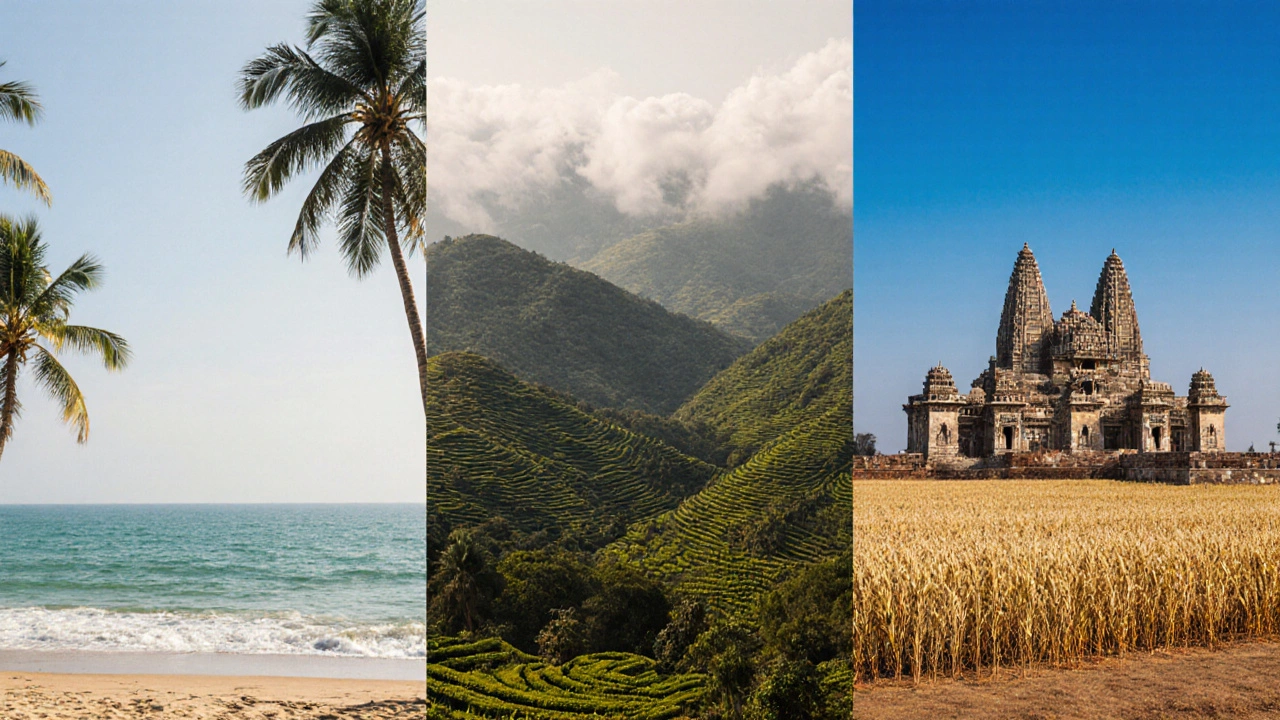
Discover the ideal month for a South India tour with detailed weather, festivals, crowd levels, and budget tips, plus a sample itinerary and FAQs.
When planning a trip, South India best time, the period that offers the most comfortable climate, cultural events, and smooth travel conditions across the southern states of India. Also known as optimal travel period for South India, it helps travelers avoid extreme heat, heavy rains, and overcrowded sites. Knowing this window is the first step to turning a vague idea of "good weather" into a concrete itinerary that matches your budget, activity level, and interests. For example, a tea plantation trek in Munnar feels completely different in January’s cool air than in May’s sweltering humidity. By the end of this intro you’ll see why timing matters more than any single destination in the south.
The climate puzzle breaks down into a few key players. Monsoon season, the period from June to September when the southwest winds bring heavy, but predictable, rainfall to coastal Kerala, Karnataka, Tamil Nadu and Andhra Pradesh cools temperatures but can disrupt beach plans and mountain roads. Winter months, roughly November to February, bring dry, pleasant days across the peninsula, with daytime highs in the mid‑20s °C and clear skies ideal for sightseeing. Summer heat, March to early May, pushes temperatures above 35 °C in inland cities like Bangalore and Chennai, making early‑morning activities a must. Meanwhile, Festivals, events such as Onam in Kerala (August‑September), Pongal in Tamil Nadu (January) and the Karnataka Dasara (September‑October) that draw crowds and add vibrant cultural layers to any visit often dictate the peak tourist season for specific regions. Understanding how each of these entities interacts—monsoon lowering temperatures, winter offering clear skies, festivals pulling crowds—lets you match your travel style with the right window.
Putting these pieces together, South India best time isn’t a single month but a set of overlapping windows that suit different priorities. If you crave coastal relaxation without rain, aim for December to February on the Arabian Sea coast. For wildlife spotting in the Western Ghats, the post‑monsoon months of October and November provide lush scenery and fewer tourists. Culture lovers will time their visit around major festivals to experience local traditions at their peak. Below you’ll find articles that dive deeper into each state’s climate calendar, budget‑friendly travel tips for the chosen period, and insider advice on festival crowds. Use this guide to fine‑tune your itinerary, then explore the curated posts that break down the best routes, must‑see attractions, and handy packing lists for every season.

Discover the ideal month for a South India tour with detailed weather, festivals, crowd levels, and budget tips, plus a sample itinerary and FAQs.